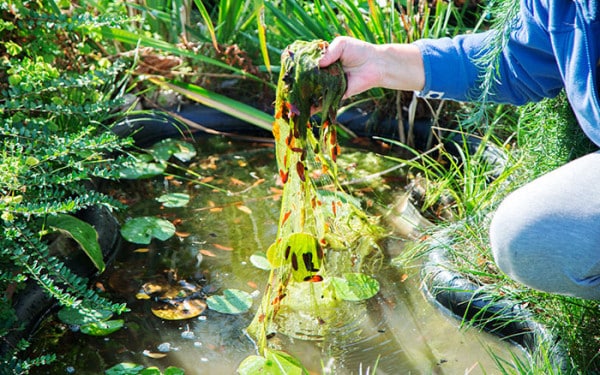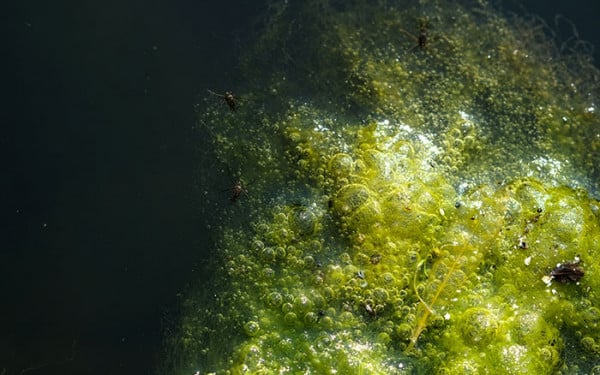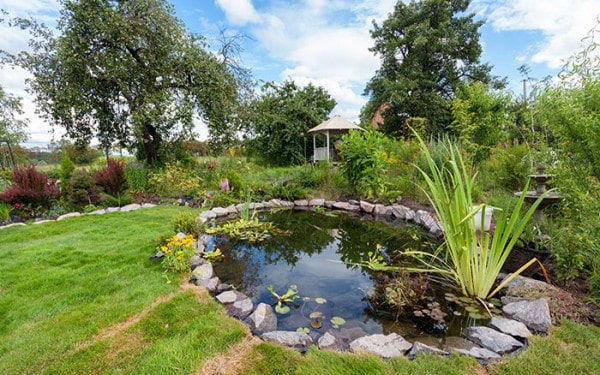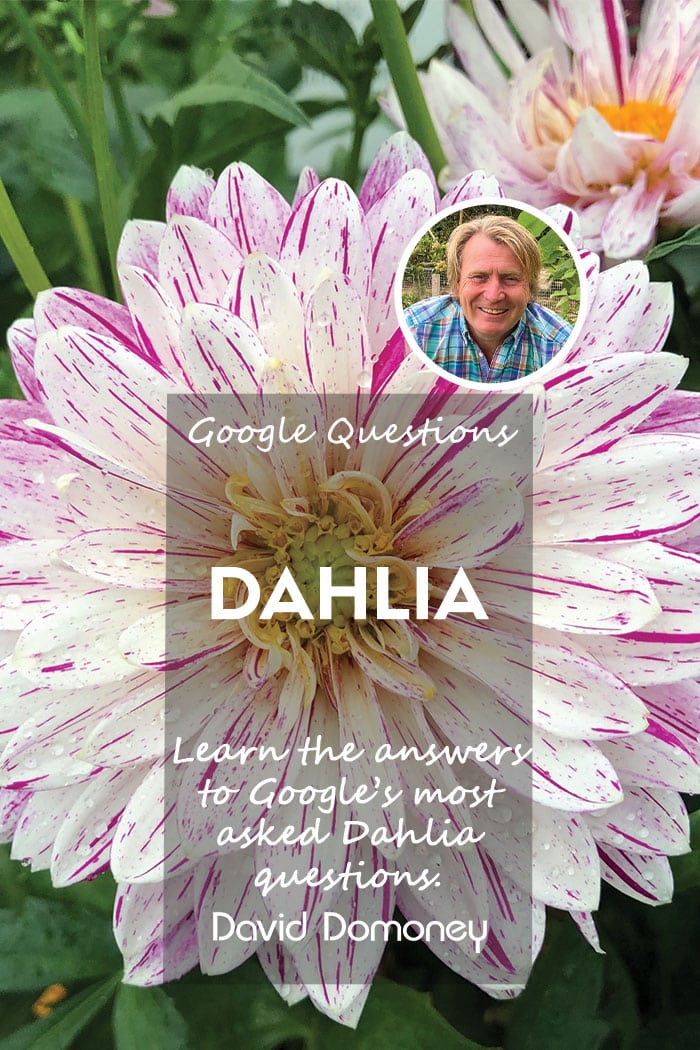Having a pond in your garden comes with many benefits. There’s the visual beauty of the water shimmering in the sun, the sound of the water feature that keeps the water from turning stagnant, then there’s the wonder of watching fish or wildlife enjoy the space too. But it can also come with common issues like algae such as blanketweed, so here’s some more information on blanketweed in your garden pond.
What is blanketweed?
Firstly, blanketweed (scientifically known as filamentous algae) is a type of algae that’s also called silkweed.
It can lead to water discolouring and cause problems by creating mats of green algae on the surface of the water. If this is left unchecked, it can harm aquatic life in the pond.
It’s recognisable by the green, hair-like strands that float or attach to plants.

What causes blanketweed?
So, where does it come from and why?
There are a few things that can lead to algae in a pond. It may be down to an excess of organic debris, or run-off and build-up of fertiliser from plants. It’s more of a risk in new ponds that haven’t yet established, as well as sunny sites where growth is more rapid.
It’s also worth bearing in mind that when the weather is sunnier in spring and summer, this is more likely to be a problem.

Control the problem
A method of control is to twirl the algae out of the pond using a long cane. However, this is only a temporary solution.
Similarly, it may be a tempting idea to change the water in the pond and start from scratch. But in the long run the problem will reoccur, so the root cause needs to be dealt with instead.
Keep the pond water from lying stagnant by having a water feature or fountain. This will aerate the water to reduce the likelihood of a build-up of algae.
Be prepared
If you haven’t got an issue with blanketweed yet but are planning on installing a pond, here are some top tips:
Ensure part of the pond is shaded at certain times of the day rather than being situated in full sun.
In addition, having a minimum depth of 75cm will stop the pond water warming up quickly when the sun is beating down. The sun can also act as a catalyst for algae growth. When adding the water, opt for rainwater rather than filling it with tap water which is more prone to algae issues.
It’s wise when picking plants for the pond to avoid adding soil to the pond and clearing out any soil or debris from the bottom of the pond.
When applying fertiliser to nearby plants and lawns, be careful with run-off making its way into the pond.
Another quick way to prevent build-up of debris is to add a net over the top of the pond to stop leaves from falling in.

Whether you have a new or established pond, keep blanketweed under control by getting to the root cause and ensuring the pond is in the right position and that steps are taken to reduce the likelihood of algae build-up.
David Domoney is a Chartered Horticulturalist, Broadcaster, and Author. David has worked with a number of the UK’s leading garden retailers as a plant buyer and strategic consultant. With more than 30 years experience, in horticulture, David is as passionate about plants now as he was when he bought his first plant at a village fete.







Leave A Comment